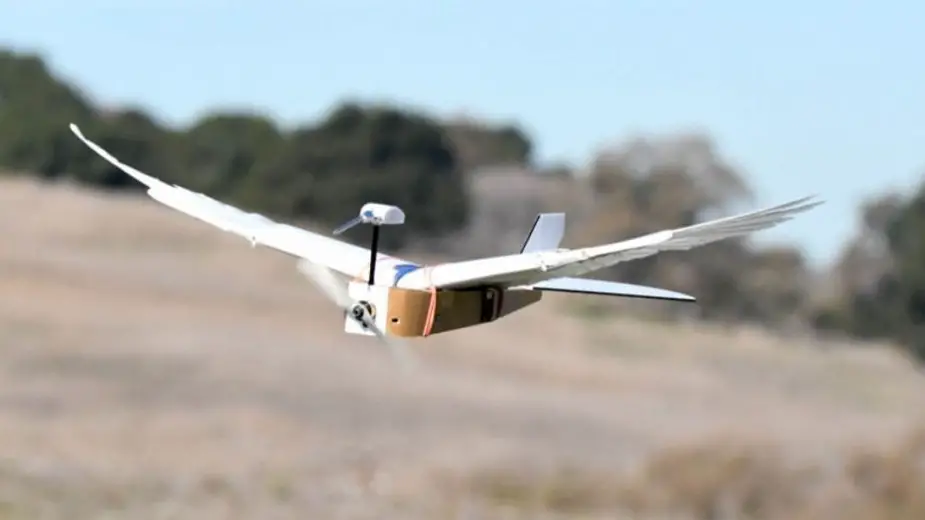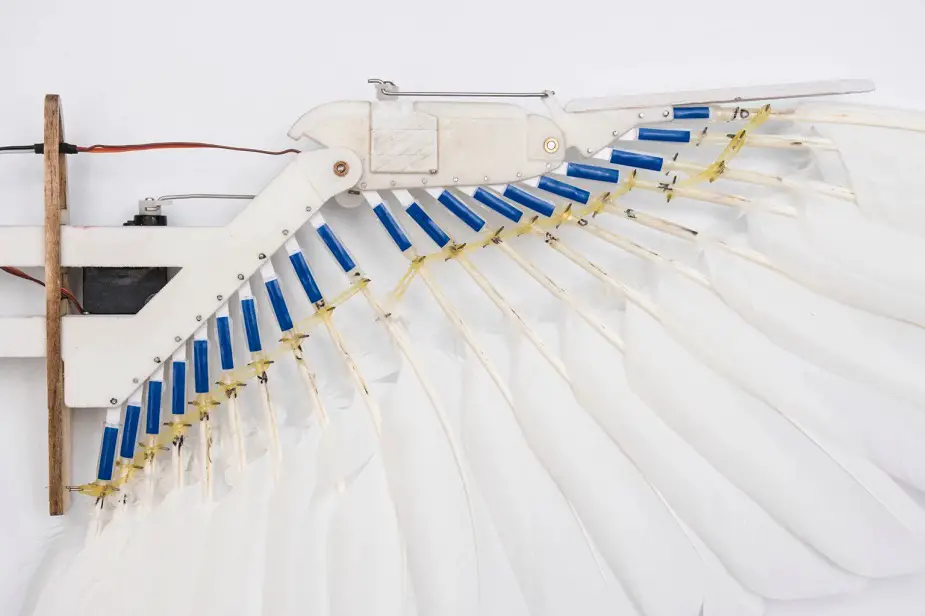Researchers at Stanford University have been looking into exactly how birds can maintain controlled flight by changing the shape of their wings. For their study, they created a robot called PigeonBot that has a pair of “biohybrid morphing wings.” The robot is being used to test out new control principles. One of the most interesting aspects of the PigeonBot is that the scientists fitted the flying robot with real bird feathers.
 PigeonBot, a winged robot that approximates the complexities of bird flight (Picture source: Lentink Lab/Stanford Univ.)
PigeonBot, a winged robot that approximates the complexities of bird flight (Picture source: Lentink Lab/Stanford Univ.)
Researchers found that the roll of the PigeonBot could be controlled with movement of the finger joint on the wing alone. They say that this technique is inherently more stable than the aileron roll used by conventional aircraft.
"The other cool thing we found is that the morphing wing asymmetry results automatically in a steady roll angle. In contrast aircraft aileron left-right asymmetry results in a roll rate, which the pilot or autopilot then has to stop to achieve a steady roll angle. Controlling a banked turn via roll angle is much simpler than via roll rate. We think it may enable birds to fly more stably in turbulence, because wing asymmetry corresponds to an equilibrium angle that the wings automatically converge to. If you are flying in turbulence and have to control the robot or airplane attitude via roll rate in response to many stochastic perturbations, roll angle has to be actively adjusted continuously without any helpful passive dynamics of the wing. Although this finding requires more research and testing, it shows how aerospace engineers can find inspiration to think outside of the box by studying how birds fly." David Lentink, head of Stanford's Bio-Inspired Research & Design (BIRD) Lab, explained.
In addition to finding that the individual control of feathers is more automatic than manual, the team found that tiny microstructures on the feathers form a sort of one-way Velcro-type material that keeps them forming a continuous surface rather than a bunch of disconnected ones.
The researchers believe that this directional Velcro discovery is one of the more important findings from their study. Surprisingly, they’re not pursuing any additional applications and have decided not to patent the finding so that their discovery can benefit society at large.
Lentink says the feather-locking technology that his team discovered could also someday inspire things like high-tech clothing fasteners or specialized bandages.
"The work is very impressive," says Alireza Ramezani, an engineering professor at Northeastern University who recently was part of a team that created a bat-inspired robot. Ramezani envisions animal-inspired robots being used in future surveillance or reconnaissance efforts, or maybe even to make package deliveries.
 The PigeonBot connected 40 real feathers elastically to a pair of robotic bird wings with wrist and finger joints that can be actuated individually. Rather than having flapping wings, the robot uses a traditional propeller and a conventional tail. (Picture source: Lentink Lab/Stanford Univ.)
The PigeonBot connected 40 real feathers elastically to a pair of robotic bird wings with wrist and finger joints that can be actuated individually. Rather than having flapping wings, the robot uses a traditional propeller and a conventional tail. (Picture source: Lentink Lab/Stanford Univ.)
















